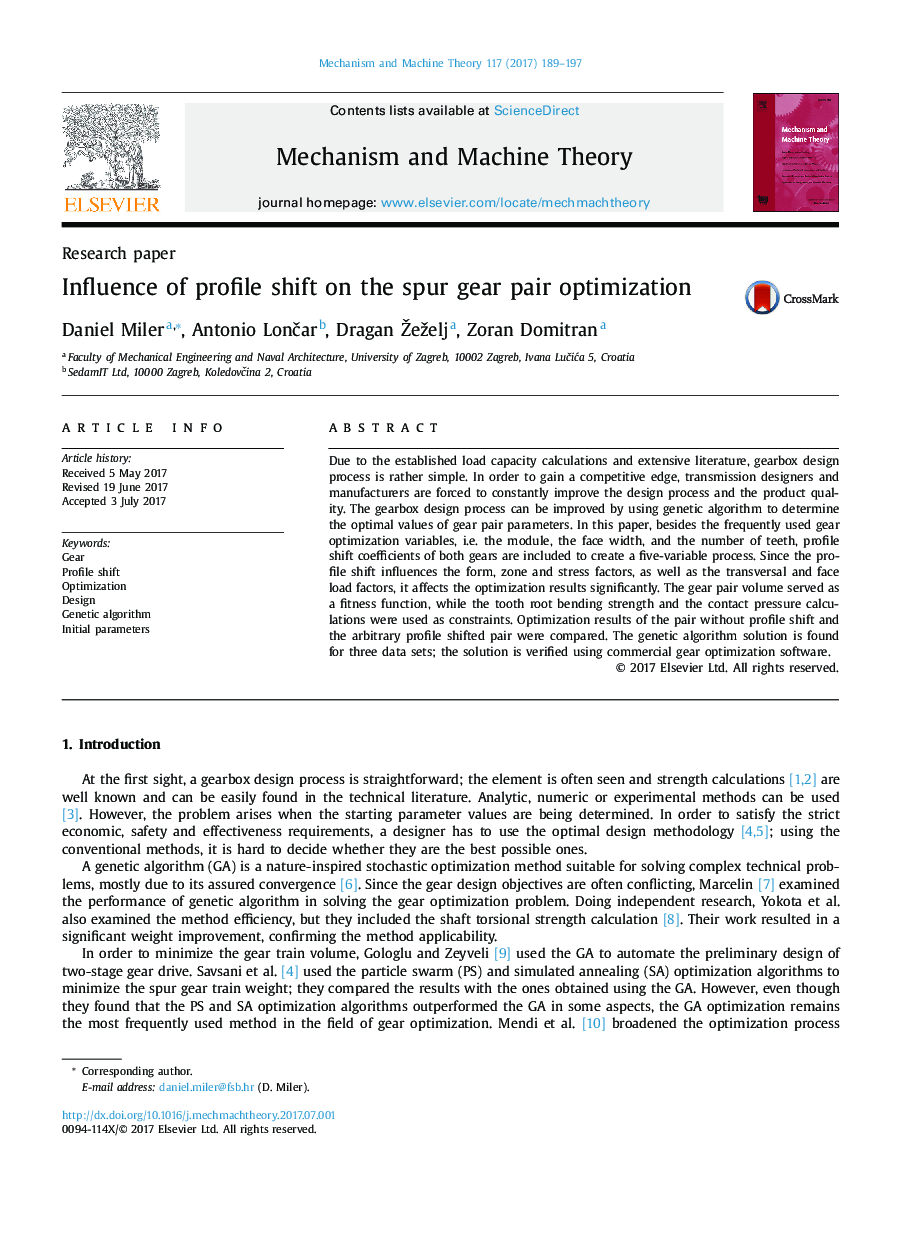| Article ID | Journal | Published Year | Pages | File Type |
|---|---|---|---|---|
| 5018877 | Mechanism and Machine Theory | 2017 | 9 Pages |
Abstract
Due to the established load capacity calculations and extensive literature, gearbox design process is rather simple. In order to gain a competitive edge, transmission designers and manufacturers are forced to constantly improve the design process and the product quality. The gearbox design process can be improved by using genetic algorithm to determine the optimal values of gear pair parameters. In this paper, besides the frequently used gear optimization variables, i.e. the module, the face width, and the number of teeth, profile shift coefficients of both gears are included to create a five-variable process. Since the profile shift influences the form, zone and stress factors, as well as the transversal and face load factors, it affects the optimization results significantly. The gear pair volume served as a fitness function, while the tooth root bending strength and the contact pressure calculations were used as constraints. Optimization results of the pair without profile shift and the arbitrary profile shifted pair were compared. The genetic algorithm solution is found for three data sets; the solution is verified using commercial gear optimization software.
Related Topics
Physical Sciences and Engineering
Engineering
Industrial and Manufacturing Engineering
Authors
Daniel Miler, Antonio LonÄar, Dragan Žeželj, Zoran Domitran,
